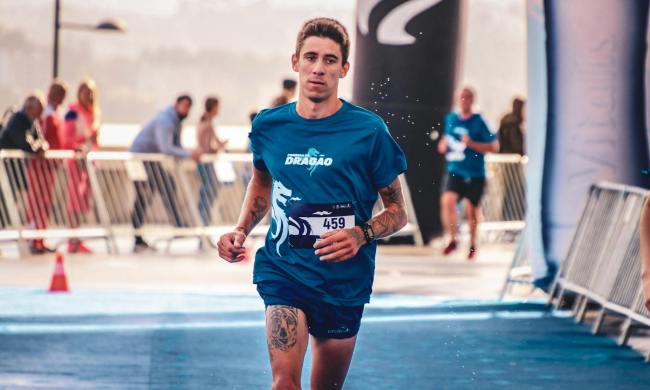On one hand, you hear people say that running is high-impact and can be bad for your knees over time. On the other hand, you hear people say that running strengthens your joints and protects bone health. Our bodies were made to move, and running has been proven to provide a range of benefits. Let’s look at the research and see if running is really bad for your knees.
Is running bad for your knees?

Most health professionals and experts conclude that running isn’t bad for your knees and that it’s actually quite the opposite. There are plenty of science-based benefits of running, including improving your mood, memory, focus, fitness, and blood pressure. Runners can attest to the magic of the ‘runners high’.
What does the research show?

Running is a natural form of movement, and mounting research concludes that frequent running strengthens joints and protects against osteoarthritis in later years. Several recent studies debunk the widespread myth that running is inherently bad for your knees and hips and could compromise your bone health in these joints over time. These studies actually indicate that the opposite is true and that running is protective of knee arthritis.
Runners might complain about knee and joint pain, but arthritis isn’t always the culprit. More common reasons for pain and injury in runners’ knees are patellofemoral pain syndrome (PFPS) and iliotibial band syndrome (ITBS).
Iliotibial band syndrome

The iliotibial band helps with knee stabilization and hip rotation. Iliotibial band syndrome, or ITBS, usually starts on the side of the knees before moving up the thigh and sometimes into the hip. The exact cause isn’t clear, but many coaches and health professionals think it could be due to running with improper form and a lack of collagen and certain nutrients rather than the act of running itself. In the vast majority of cases, physicians treat ITBS with physical therapy and strength training. Running coaches often recommend adjusting your gait and running technique. In rare cases, physicians recommend surgery.
Patellofemoral pain syndrome

Patellofemoral pain syndrome, or PFPS, typically starts suddenly in the front of the knee. This condition might sometimes be called runner’s knee, but many experts believe it’s more related to weakness in the quadriceps and hamstrings muscles in the thighs. Patella is the word for kneecap, and the condition involves the kneecap moving slightly out of alignment. This condition rarely necessitates surgery, and it’s usually treated with physical therapy and orthotic inserts.
In conclusion

Running isn’t bad for your knees, and most fitness and health professionals believe that other causes are more to blame for knee problems, such as:
- Lack of collagen and certain nutrients
- Improper form when running
- Poor gait
- Overuse injuries from doing way more than your body can handle
The research shows that running is beneficial for your joint health and could be protective for osteoarthritis over time.
Tips to protect your knees

Follow these tips to help reduce your risk of knee problems:
- You can wear protective knee braces from time to time.
- Take rest days.
- Stretch before you set off.
- Make sure you’re running with proper form.
- Buy the proper supportive running shoes.
- Consume a nutrient-dense diet.
- Add other forms of exercise into your routine and boost your quad and hamstring strength.
It’s important that you don’t overdo it and reach a point of burnout. Everyone has their limits. Running is a high-impact activity; rest days are crucial to help your muscles repair and recover. If you’re experiencing a sudden pain, you should consult with your healthcare provider to rule out other underlying causes.




